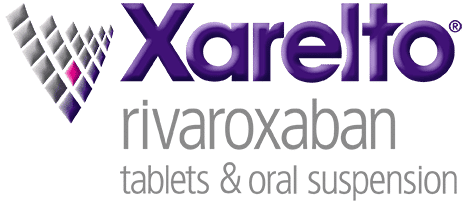预约演示
更新于:2025-05-07
Janssen-Cilag Pty Ltd.
更新于:2025-05-07
概览
标签
其他疾病
免疫系统疾病
肿瘤
小分子化药
单克隆抗体
双特异性T细胞结合器
疾病领域得分
一眼洞穿机构专注的疾病领域
暂无数据
技术平台
公司药物应用最多的技术
暂无数据
靶点
公司最常开发的靶点
暂无数据
| 排名前五的药物类型 | 数量 |
|---|---|
| 小分子化药 | 18 |
| 单克隆抗体 | 3 |
| 双特异性T细胞结合器 | 2 |
| 预防性疫苗 | 1 |
| 双特异性抗体 | 1 |
关联
29
项与 Janssen-Cilag Pty Ltd. 相关的药物作用机制 CD3刺激剂 [+3] |
非在研适应症- |
最高研发阶段批准上市 |
首次获批国家/地区 美国 |
首次获批日期2023-08-09 |
靶点 |
作用机制 BCMA调节剂 [+2] |
原研机构 |
非在研适应症- |
最高研发阶段批准上市 |
首次获批国家/地区 美国 |
首次获批日期2022-02-28 |
20
项与 Janssen-Cilag Pty Ltd. 相关的临床试验NCT06103760
Positioning of Esketamine Treatment in the Real-world Management of Depression
The goal of this naturalistic, open label, single arm intervention study is to investigate the effects of Esketamine in treating depression.The main aims to answer are:
to investigate whether Esketamine is effective when added to ongoing antidepressant treatment
to identify patient characteristics that will determine a therapeutic response to Esketamine in real-world practice
Participants will:
attend the clinic for supervised self-administration of intranasal Esketamine treatment
be observed for 2 hours following Esketamine administration including blood pressure monitoring
be asked to complete a battery of questionnaires
be reimbursed for travel expenses
to investigate whether Esketamine is effective when added to ongoing antidepressant treatment
to identify patient characteristics that will determine a therapeutic response to Esketamine in real-world practice
Participants will:
attend the clinic for supervised self-administration of intranasal Esketamine treatment
be observed for 2 hours following Esketamine administration including blood pressure monitoring
be asked to complete a battery of questionnaires
be reimbursed for travel expenses
开始日期2023-10-31 |
申办/合作机构 |
ACTRN12621000297820
A Quality of Life and Chart Review of Patients Living with Treatment Resistant Major Depressive Disorder at a Single Site in Australia
开始日期2021-04-01 |
申办/合作机构 |
NCT01362426
A Quality Use of Medicine Clinical Registry to Assess Clinical Outcomes in Patients With Schizophrenia Treated With Intramuscular Injections of Paliperidone Palmitate
The primary objective of this study is to determine if Australian patients with schizophrenia treated with paliperidone palmitate under conditions of continuous monitoring of outcomes over a 12-month period achieve relapse rates comparable to published literature.
开始日期2011-03-01 |
申办/合作机构 |
100 项与 Janssen-Cilag Pty Ltd. 相关的临床结果
登录后查看更多信息
0 项与 Janssen-Cilag Pty Ltd. 相关的专利(医药)
登录后查看更多信息
18
项与 Janssen-Cilag Pty Ltd. 相关的文献(医药)2024-11-01·The British Journal of Psychiatry
Efficacy and safety of a 4-week course of repeated subcutaneous ketamine injections for treatment-resistant depression (KADS study): commentary, Joks et al
Article
作者: King, Jarrad ; Su, Steve ; Joks, Gero
2023-11-01·Internal Medicine Journal
Australian data on the utilisation and duration on treatment of ibrutinib with a proton pump inhibitor in patients with relapsed or refractory chronic lymphocytic leukaemia
Article
作者: Puig, Andrea ; Mulligan, Stephen ; Opat, Stephen ; McGeachie, Marija ; Salvaris, Ross
2023-10-01·International journal of rheumatic diseases
Magnetic resonance imaging RAMRIS-SAFE score-A low-risk effective measure of rapid response to therapy in rheumatoid arthritis clinical trials.
Article
作者: Hall, Stephen ; Bird, Paul ; Spiers, Stefanie ; Needham, Scott
100 项与 Janssen-Cilag Pty Ltd. 相关的药物交易
登录后查看更多信息
100 项与 Janssen-Cilag Pty Ltd. 相关的转化医学
登录后查看更多信息
组织架构
使用我们的机构树数据加速您的研究。
登录
或

管线布局
2025年12月22日管线快照
管线布局中药物为当前组织机构及其子机构作为药物机构进行统计,早期临床1期并入临床1期,临床1/2期并入临床2期,临床2/3期并入临床3期
批准上市
26
3
其他
登录后查看更多信息
当前项目
| 药物(靶点) | 适应症 | 全球最高研发状态 |
|---|---|---|
达芦那韦考比司他 ( CYP3A x HIV-1 pol ) | HIV感染 更多 | 批准上市 |
帕利哌酮 ( 5-HT2A receptor x D2 receptor ) | 精神分裂症 更多 | 批准上市 |
马昔腾坦 ( ETA x ETB ) | 特发性肺动脉高压 更多 | 批准上市 |
特立妥单抗 ( BCMA x CD3 ) | 多发性骨髓瘤 更多 | 批准上市 |
埃万妥单抗 ( EGFR x c-Met ) | EGFR 20号外显子插入突变非小细胞肺癌 更多 | 批准上市 |
登录后查看更多信息
药物交易
使用我们的药物交易数据加速您的研究。
登录
或

转化医学
使用我们的转化医学数据加速您的研究。
登录
或

营收
使用 Synapse 探索超过 36 万个组织的财务状况。
登录
或

科研基金(NIH)
访问超过 200 万项资助和基金信息,以提升您的研究之旅。
登录
或

投资
深入了解从初创企业到成熟企业的最新公司投资动态。
登录
或

融资
发掘融资趋势以验证和推进您的投资机会。
登录
或

生物医药百科问答
全新生物医药AI Agent 覆盖科研全链路,让突破性发现快人一步
立即开始免费试用!
智慧芽新药情报库是智慧芽专为生命科学人士构建的基于AI的创新药情报平台,助您全方位提升您的研发与决策效率。
立即开始数据试用!
智慧芽新药库数据也通过智慧芽数据服务平台,以API或者数据包形式对外开放,助您更加充分利用智慧芽新药情报信息。
生物序列数据库
生物药研发创新
免费使用
化学结构数据库
小分子化药研发创新
免费使用


